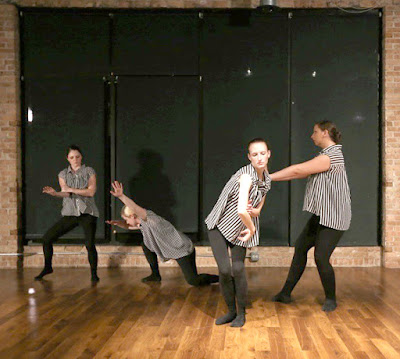This review of traditional pop music from the golden age of show business is performed by a company of four multi-talented artists who remain on pitch, on cue, and on point during more than 25 numbers that last a continuous eighty minutes.
Flora Ann McIntyre, Jennifer Mather, Michael Ehlers and Jim Goodrich are each highly trained professionals with extensive stage experience, whose excellence of craft is exceeded only by their charisma and group chemistry.
| Flora Ann McIntyre, Michael Ehlers, Jenny Mather and Jim Goodrich perform in "Home For The Holidays" at the Elgin Art Showcase. |
From the Great War's USO shows, to fabulous fifties Miami, to December in Vermont, moments of lively and well-written comedic banter paces us through skillful arrangements of classics, standards and forgotten gems. The quartet sails through complex harmonies, key changes and flights of a cappella, synced with a variety of dance, props and costume changes.
Unlike the instant art (just add water!) and microwaveable music we're used to, this is Baked Alaska -- it's the real thing, and you can taste the difference.
Musical director Bob Kresz is an amazing one-man band, simultaneously handling sound tracks and playing multiple voices on keyboards. The technical production is simple, as it should be with this much talent on display.
"Home For The Holidays" is the kind of show that could become a perennial favorite for large repeat audiences, like the Nutcracker or the Rockettes. We hope this show never goes away, and might next year make one of Elgin's larger venues it's home for the holidays.























